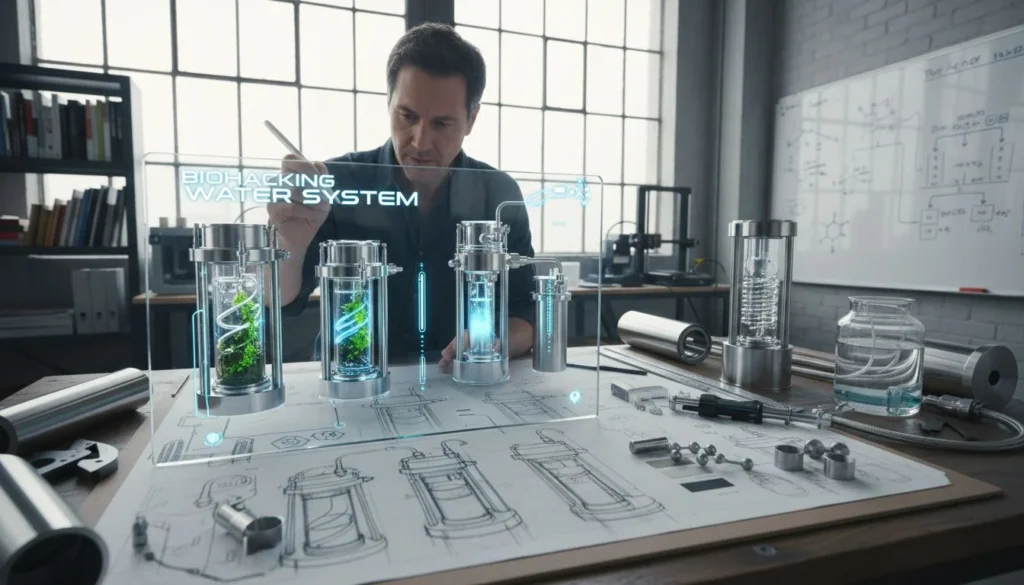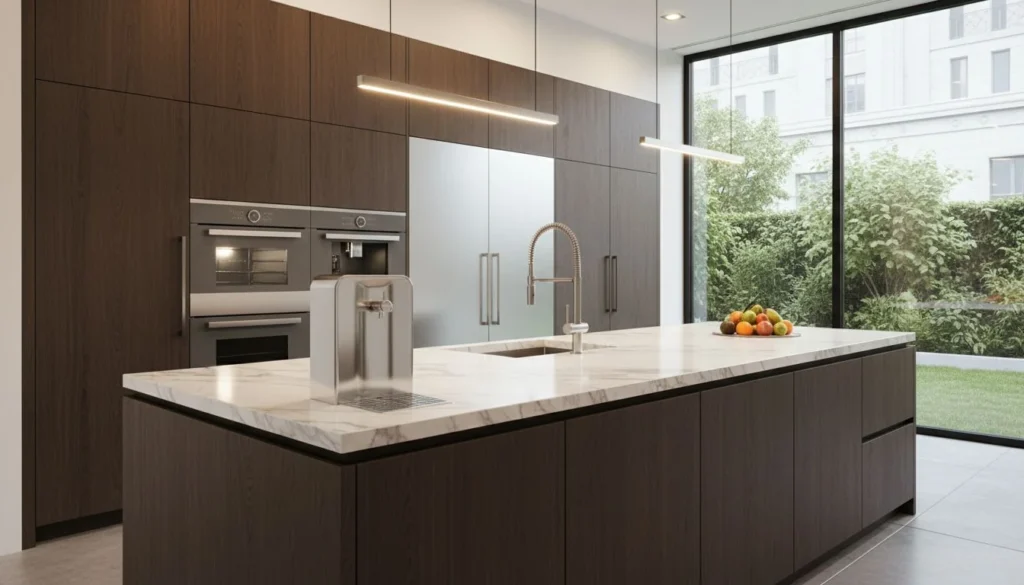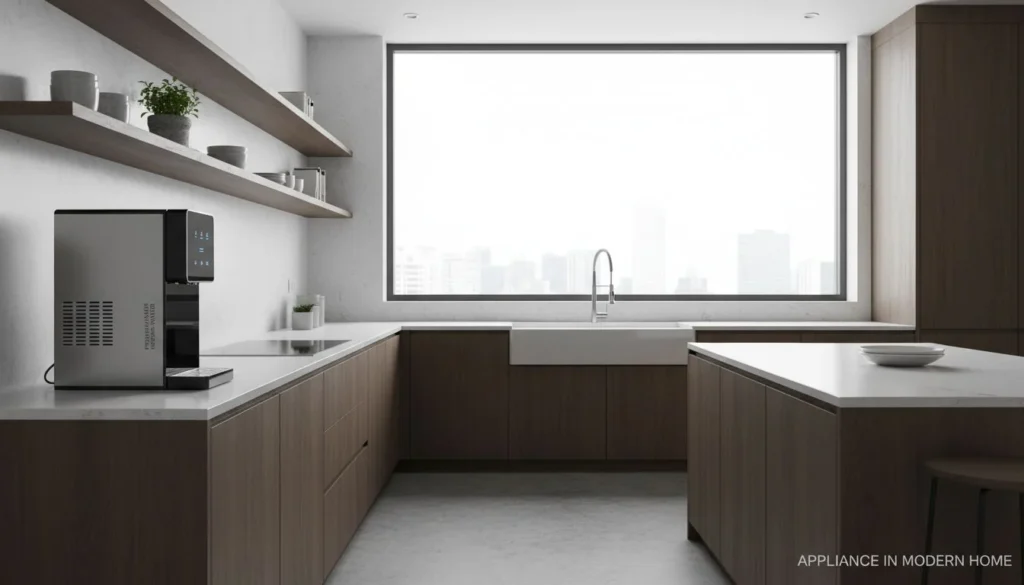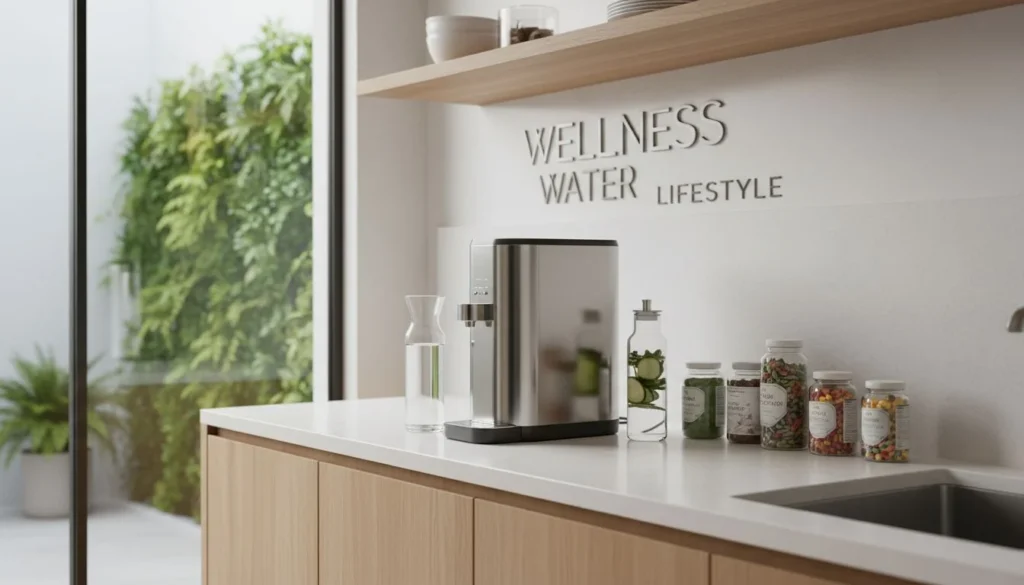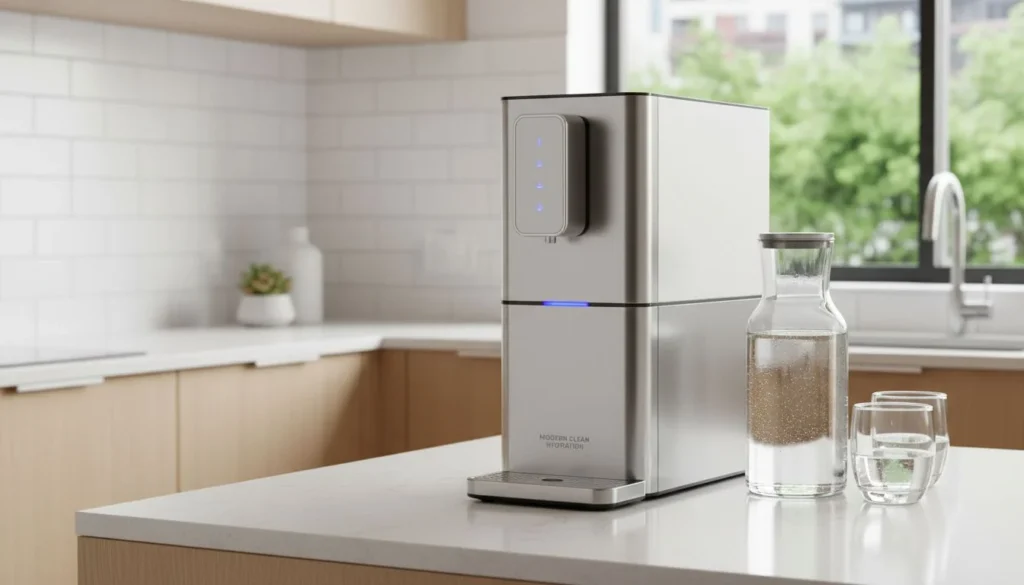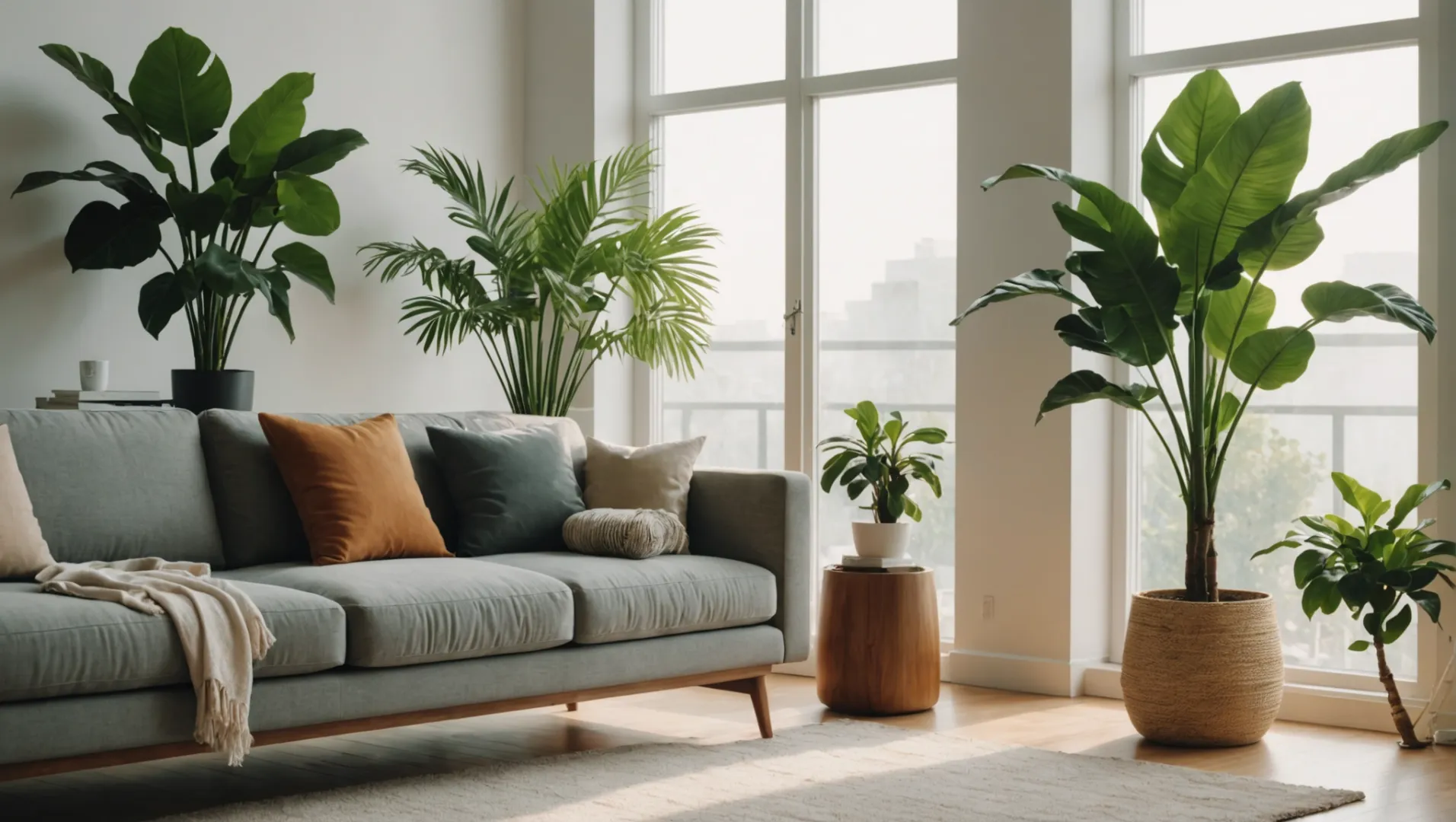
Envisagez-vous d'acheter un purificateur d'air pour lutter contre la poussière dans votre maison ? Rejoignez-moi pour percer le mystère de ces appareils et découvrir s'ils tiennent vraiment leur promesse d'un air plus pur !
Purificateurs d'air, en particulier True HEPA sont très efficaces pour réduire la poussière, capturant 99,97% de particules aussi petites que 0,3 micron. Ils constituent donc un excellent choix pour améliorer la qualité de l'air intérieur.
Bien que l'efficacité des purificateurs d'air soit prometteuse, il est essentiel de comprendre les nuances des différents modèles et technologies. Dans cet article de blog, nous allons explorer le fonctionnement de ces appareils, leurs avantages et les éléments à prendre en compte avant de faire un achat.
Les véritables filtres HEPA capturent 99,97% des particules de 0,3 micron.Vrai
Les véritables filtres HEPA sont conçus pour piéger des particules aussi petites que 0,3 micron avec une grande efficacité.
Ce qui fait la vérité HEPA Les filtres sont-ils si efficaces ?
Vrai HEPA sont réputés pour leur capacité à capturer un remarquable 99,97% de particules en suspension dans l'air aussi petites que 0,3 micron, mais qu'est-ce qui contribue exactement à cette efficacité ?
Vrai HEPA sont efficaces grâce à leur construction en fibres denses et à leur capacité à piéger de minuscules particules telles que la poussière, le pollen et la fumée. Testés par des laboratoires tiers, ils garantissent une efficacité de filtration de 99,97% pour les particules de 0,3 micron ou plus, préservant ainsi la santé en améliorant considérablement la qualité de l'air.
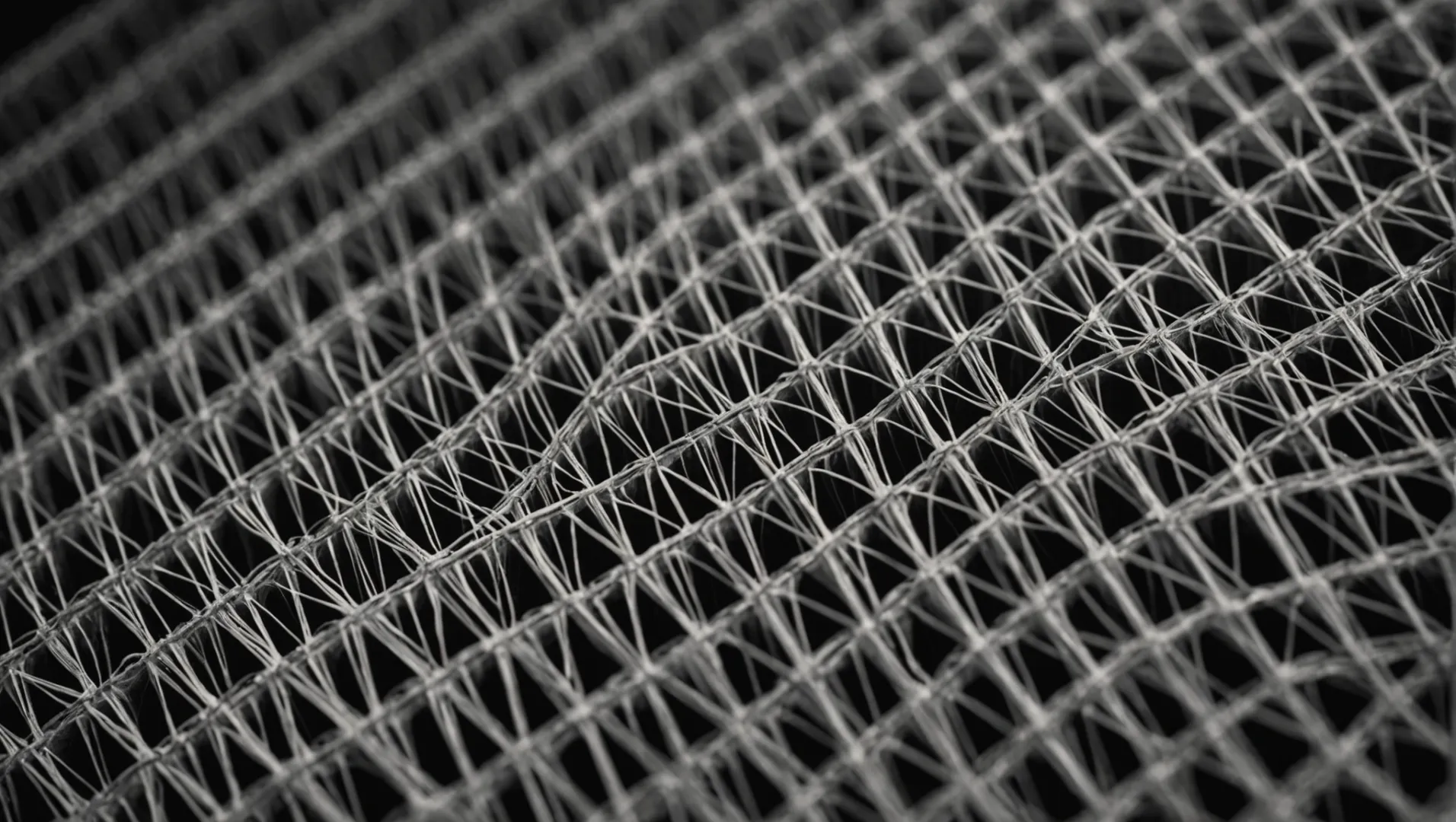
Comprendre le mécanisme à l'origine de la véritable HEPA Filtres
La clé de l'efficacité des Vrai HEPA filtres1 réside dans leur conception complexe. Ces filtres sont construits à l'aide de couches de fibres très denses qui créent un tapis destiné à piéger les particules par diffusion, interception et impaction.
- Diffusion : De minuscules particules entrent en collision avec les molécules de gaz et se retrouvent piégées dans les fibres en raison de leurs mouvements erratiques.
- Interception : Le flux d'air transporte les particules suffisamment près d'une fibre, ce qui leur permet d'y adhérer.
- Impaction : Les particules plus grosses qui se déplacent en ligne droite entrent directement en collision avec les fibres et sont piégées.
Cette approche multidimensionnelle permet à True HEPA pour capturer les particules minuscules telles que la poussière, le pollen, les spores de moisissure et même la fumée.
Applications et avantages dans le monde réel
Dans les environnements propices aux incendies de forêt2comme certaines régions des États-Unis, vrai HEPA jouent un rôle crucial. Ils peuvent éliminer efficacement de l'air les particules de fumée, dont la taille est généralement inférieure à 1 micron. En fermant les fenêtres et en utilisant un filtre True HEPA en mode turbo pendant au moins une heure, vous pouvez obtenir un échange d'air significatif, améliorant ainsi la qualité de l'air intérieur.
| Caractéristiques | Vrai HEPA Efficacité du filtre |
|---|---|
| Élimination de la taille des particules | Capture 0,3 micron et plus |
| Efficacité de la filtration | 99.97% |
| Utilisations courantes | Allergies, réduction de la fumée et de la poussière |
| Avantages pour la santé | Réduit le risque de problèmes respiratoires |
Comparaison avec d'autres technologies
Bien qu'il existe des technologies telles que les rayons UV et les ionisateurs, elles n'ont pas l'efficacité de True HEPA Les filtres sont plus efficaces pour capturer les particules. La lumière UV est plus axée sur la destruction des bactéries et des virus, tandis que les ionisateurs fonctionnent en chargeant électriquement les particules. Toutefois, ces technologies peuvent ne pas piéger efficacement tous les contaminants en suspension dans l'air.
Pour les personnes souffrant d'allergies à la poussière ou vivant dans des zones où la qualité de l'air est médiocre, un système True HEPA est souvent recommandé par rapport à d'autres options en raison de sa qualité supérieure. dépoussiérage3 des capacités.
Les véritables filtres HEPA capturent 99,97% des particules de 0,3 micron.Vrai
Les filtres True HEPA sont testés pour garantir qu'ils capturent 99,97% de particules.
La lumière UV est plus efficace que les filtres HEPA pour le dépoussiérage.Faux
Les filtres HEPA sont plus efficaces pour capturer les particules de poussière que la lumière UV.
Les purificateurs d'air peuvent-ils aider à lutter contre les allergies et les problèmes respiratoires ?
Vous souffrez d'allergies ou de problèmes respiratoires à la maison ? Découvrez si les purificateurs d'air peuvent être votre solution pour mieux respirer.
Purificateurs d'air, en particulier ceux dotés de la technologie True HEPA atténuent considérablement les allergies et les problèmes respiratoires en retenant les allergènes et les polluants d'une taille aussi petite que 0,3 micron.
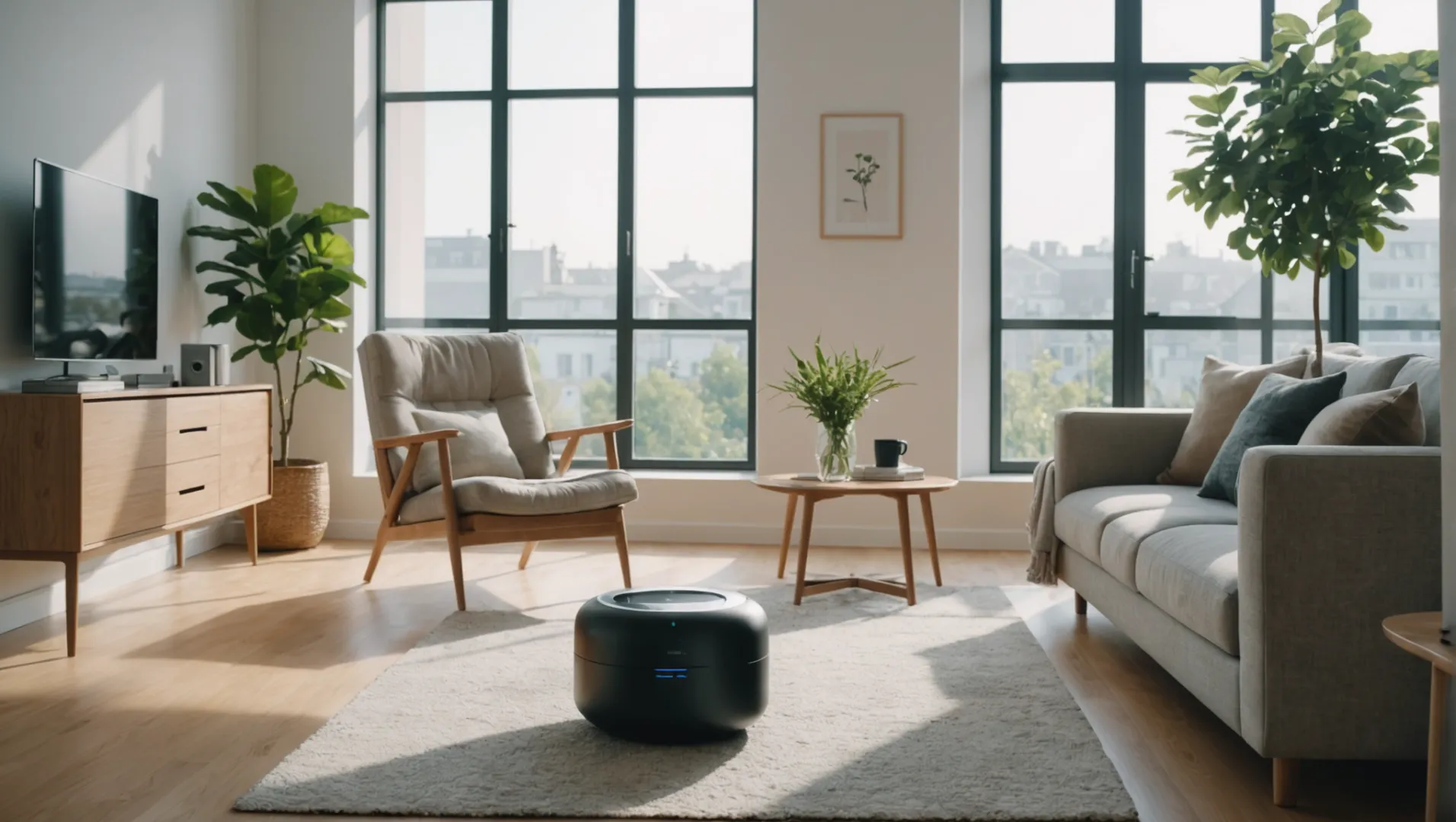
Comprendre les allergènes aéroportés et leur impact
Les allergènes tels que les acariens, le pollen, les squames d'animaux et les spores de moisissures sont des polluants courants de l'air intérieur qui déclenchent des allergies et des problèmes respiratoires. Ces particules peuvent provoquer des symptômes tels que des éternuements, de la congestion, de la toux et même des crises d'asthme. Les purificateurs d'air avec Vrai HEPA filtres4 sont conçus pour capturer ces minuscules irritants, réduisant ainsi leur présence dans votre espace de vie.
La vérité HEPA Le travail des filtres
Vrai HEPA sont très efficaces pour capturer les particules en suspension dans l'air. Ils peuvent retenir jusqu'à 99,97% de particules aussi petites que 0,3 micron, ce qui les rend particulièrement efficaces pour les personnes souffrant d'allergies. Lorsqu'ils sont utilisés correctement, ils peuvent réduire de manière significative la concentration d'allergènes dans l'air, minimisant ainsi les symptômes d'allergies.
Avantages des purificateurs d'air pour la santé respiratoire
Pour les personnes souffrant de troubles respiratoires tels que l'asthme ou la broncho-pneumopathie chronique obstructive (BPCO), il est essentiel de maintenir un air pur. En éliminant les polluants nocifs, les purificateurs d'air peuvent prévenir l'exacerbation de ces conditions. Lors d'événements tels que saisons des feux de forêt5Lorsque la fumée et d'autres polluants augmentent considérablement, un purificateur d'air peut devenir un outil vital pour la protection de la santé respiratoire.
Technologies supplémentaires pour les purificateurs d'air
Tant que c'est vrai HEPA est l'étalon-or, certains purificateurs d'air intègrent des technologies supplémentaires telles que des filtres à charbon actif, des rayons UV ou des ionisateurs pour améliorer encore la qualité de l'air. Ces fonctions peuvent contribuer à neutraliser les odeurs ou à tuer les bactéries et les virus, offrant ainsi une solution plus complète aux personnes souffrant d'allergies graves ou de problèmes respiratoires.
Conseils pour une utilisation optimale
Pour maximiser les avantages d'un purificateur d'air, tenez compte des conseils suivants :
- Placement: Placez le purificateur dans les zones où vous passez le plus de temps, comme les chambres à coucher ou les salles de séjour.
- Entretien régulier: Nettoyez ou remplacez les filtres conformément aux instructions du fabricant pour garantir l'efficacité de l'appareil.
- Taille de la pièce: Choisissez un modèle adapté à la taille de votre pièce pour une performance optimale.
En comprenant le fonctionnement des différents types de purificateurs d'air et leurs avantages spécifiques, vous pourrez prendre une décision éclairée qui répondra au mieux à vos besoins et améliorera la qualité de votre air intérieur.
Les véritables filtres HEPA capturent 99,97% des particules.Vrai
Les véritables filtres HEPA sont conçus pour piéger des particules aussi petites que 0,3 micron.
Les purificateurs d'air éliminent tous les allergènes intérieurs.Faux
Bien qu'efficaces, les purificateurs d'air ne peuvent pas éliminer 100% de tous les allergènes.
Quelles sont les performances des purificateurs d'air pendant la saison des incendies ?
Les incendies de forêt dégagent un mélange dangereux de fumée et de particules fines. Les purificateurs d'air peuvent-ils apporter un soulagement pendant ces périodes ?
Purificateurs d'air avec True HEPA sont efficaces pendant la saison des feux de forêt, capturant les particules de fumée et améliorant considérablement la qualité de l'air intérieur. En les faisant fonctionner en continu dans les zones touchées, ils contribuent à réduire l'exposition aux polluants nocifs.
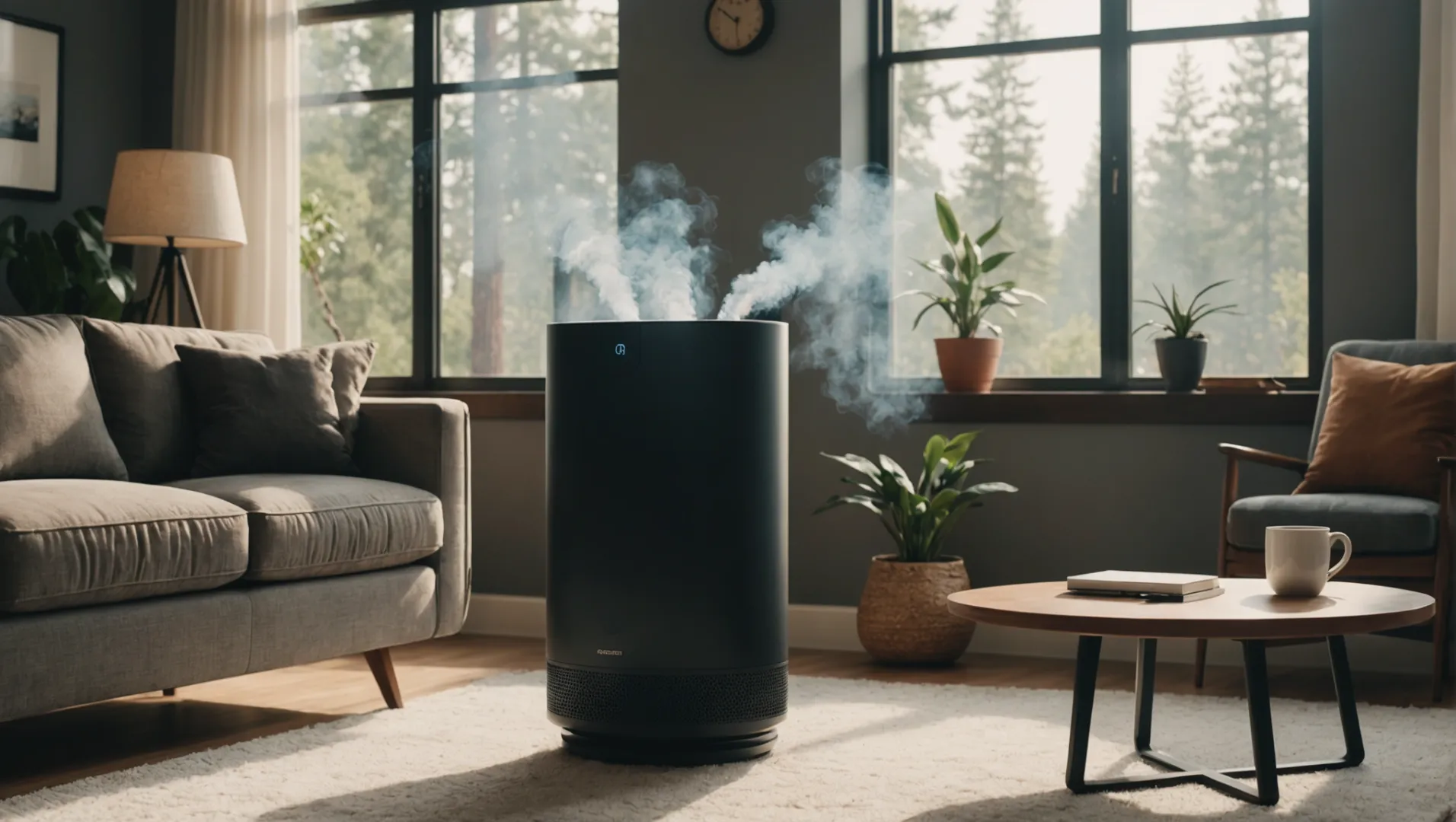
Comprendre l'impact des fumées des incendies de forêt
Les incendies de forêt produisent un cocktail de substances nocives, notamment des particules fines (PM2,5), du monoxyde de carbone et des composés organiques volatils (COV). Ces polluants peuvent pénétrer profondément dans les poumons et exacerber les conditions respiratoires. Lors de tels événements, la qualité de l'air à l'extérieur se détériore, affectant même les environnements intérieurs.
Rôle de True HEPA Filtres
Vrai HEPA certifiés pour capturer 99,97% de particules aussi petites que 0,3 micron, sont idéaux pour traiter la fumée des incendies de forêt. Ils retiennent efficacement les minuscules particules qui composent la fumée, améliorant ainsi considérablement la qualité de l'air intérieur. Outre la fumée, ces filtres éliminent également la poussière et les allergènes.
Optimiser l'utilisation des purificateurs d'air pendant les incendies de forêt
- Placement : Placez le purificateur d'air dans les pièces où vous passez le plus de temps.
- Mode : Utilisez le mode turbo ou haute performance pour une purification rapide de l'air.
- Durée de l'enquête : Faire fonctionner le purificateur en continu, en particulier lorsque les indices de qualité de l'air révèlent des niveaux de pollution élevés.
- Scellage : Gardez les fenêtres et les portes fermées pour empêcher la fumée extérieure de s'infiltrer dans votre maison.
| Mode | Taux de renouvellement de l'air | Utilisation recommandée |
|---|---|---|
| Turbo | 5-6 fois/heure | Pendant les pics de pollution |
| Normal | 3-4 fois/heure | Utilisation régulière pour maintenir la qualité de l'air |
Limites et considérations supplémentaires
Tant que c'est vrai HEPA sont très efficaces, il est important de noter qu'ils n'éliminent pas les gaz tels que le monoxyde de carbone. Pour une protection complète, envisagez les modèles qui comprennent des filtres à charbon actif pour absorber les odeurs et les gaz polluants. Il est également essentiel d'entretenir régulièrement les filtres pour garantir des performances optimales.
Efficacité de True HEPA dans le domaine de la filtration des fumées6: Découvrez pourquoi ces filtres sont privilégiés pendant la saison des feux de forêt.
Technologies alternatives pour la purification de l'air7: Explorer d'autres technologies telles que la lumière UV et les ionisateurs et leur efficacité contre la fumée et la poussière.
Rester informé sur indices locaux de qualité de l'air8 peut vous aider à décider quand activer votre purificateur d'air et à ajuster les réglages pour en tirer le meilleur parti.
Les filtres True HEPA éliminent 99,97% des particules de fumée.Vrai
Les véritables filtres HEPA capturent des particules aussi petites que 0,3 micron, y compris la fumée.
Les purificateurs d'air peuvent éliminer le monoxyde de carbone provenant de la fumée des incendies de forêt.Faux
Les filtres HEPA n'éliminent pas les gaz ; des filtres à charbon actif sont nécessaires.
Existe-t-il des alternatives aux HEPA Purificateurs d'air pour le contrôle de la poussière ?
HEPA Les purificateurs d'air sont réputés pour leur capacité à contrôler la poussière, mais existe-t-il d'autres options viables ?
Alternatives aux HEPA Les purificateurs d'air comprennent les épurateurs d'air électrostatiques, les filtres à charbon actif et les ionisateurs. Bien qu'ils puissent contribuer à la réduction de la poussière, leur efficacité varie par rapport à celle des véritables purificateurs d'air. HEPA modèles.

Exploration des purificateurs d'air électrostatiques
Les purificateurs d'air électrostatiques utilisent des plaques chargées électriquement pour capturer les particules de poussière. Ces appareils peuvent être efficaces pour les grosses particules, mais ils peuvent ne pas capturer les petites particules aussi efficacement que les True HEPA des filtres. L'entretien de ces systèmes implique un nettoyage fréquent des plaques afin de garantir des performances optimales.
Filtres à charbon actif
Les filtres à charbon actif sont principalement connus pour éliminer les odeurs et les gaz plutôt que les particules de poussière solides. Toutefois, ils sont souvent utilisés en association avec d'autres systèmes de filtration pour améliorer la qualité globale de l'air. Ils peuvent constituer un choix complémentaire à d'autres méthodes, mais ne suffisent pas à eux seuls à éliminer les poussières de manière significative.
Ioniseurs : Avantages et inconvénients
Les ionisateurs libèrent dans l'air des ions chargés qui se fixent sur les particules de poussière, les rendant suffisamment lourdes pour qu'elles tombent au sol. Si cette méthode permet de réduire la poussière en suspension dans l'air, elle n'élimine pas complètement les particules de l'environnement. Certains ioniseurs peuvent également produire de l'ozone, ce qui peut nuire à la qualité de l'air intérieur.
Comparaison des alternatives
| Méthode | Efficacité sur les poussières | Avantages supplémentaires |
|---|---|---|
| HEPA Purificateurs d'air | Haut | Efficace contre les petites particules |
| Épurateurs d'air électrostatiques | Modéré | Peut être rentable grâce à un nettoyage régulier |
| Filtres à charbon actif | Faible | Excellent pour l'élimination des odeurs |
| Ionisateurs | Variable | Peut contribuer à réduire la poussière mais peut produire de l'ozone |
Lorsqu'il s'agit d'envisager des alternatives aux Vrai HEPA purificateurs d'air9Pour améliorer la qualité de l'air intérieur, il est essentiel d'évaluer vos besoins spécifiques, tels que la taille de l'espace et toute autre préoccupation comme les odeurs ou les vapeurs chimiques. La combinaison de plusieurs méthodes peut offrir une solution complète pour améliorer la qualité de l'air intérieur.
Les purificateurs d'air électrostatiques capturent des particules plus petites que les purificateurs d'air HEPA.Faux
Les nettoyeurs électrostatiques sont moins efficaces sur les petites particules que les nettoyeurs HEPA.
Les ionisateurs peuvent produire de l'ozone, ce qui nuit à la qualité de l'air intérieur.Vrai
Certains ioniseurs libèrent de l'ozone, ce qui peut nuire à la qualité de l'air.
Conclusion
Dans ma quête d'un air plus pur, j'ai découvert que True HEPA sont une solution efficace pour réduire la poussière et améliorer la qualité de l'air intérieur. Choisissez-les judicieusement en fonction de votre environnement et de vos besoins spécifiques.
-
Découvrez en détail le fonctionnement des filtres True HEPA.. : Un filtre à particules à haute efficacité (HEPA) peut éliminer 99,97% - 99,99% des particules en suspension dans l'air dont la taille est égale, inférieure ou supérieure à 0,3 micron. ↩
-
Découvrez comment les filtres HEPA traitent efficacement les particules de fumée.. : Et c'est vrai : les filtres à air HEPA sont exceptionnellement efficaces pour éliminer de l'air les particules de cette taille. ↩
-
Découvrez les purificateurs d'air les mieux notés, spécialement conçus pour le contrôle de la poussière.. : Nous avons testé plus de 60 purificateurs d'air au cours des neuf dernières années, et l'exceptionnel Coway Airmega AP-1512HH Mighty est notre meilleur choix parmi eux. ↩
-
En savoir plus sur l'efficacité et la fonction des filtres True HEPA.. : Un filtre à particules à haute efficacité (HEPA) peut éliminer 99,97% - 99,99% des particules en suspension dans l'air dont la taille est égale, inférieure ou supérieure à 0,3 micron. ↩
-
Comprendre les performances des purificateurs d'air dans un contexte d'augmentation de la fumée et des polluants.. : Les purificateurs d'air ambiant peuvent aider à éliminer les particules fines de l'air de votre maison pendant un épisode de fumée d'incendie de forêt. ↩
-
Comprenez pourquoi les filtres True HEPA sont excellents pour capturer les particules de fumée.. : Les filtres à air HEPA sont exceptionnellement efficaces pour éliminer de l'air les particules de cette taille. Nos meilleurs choix, le Coway AP-1512HH et presque ... ↩
-
Découvrez d'autres technologies de purification de l'air et leur efficacité.. : Les générateurs d'ions, l'oxydation photocatalytique et la technologie exclusive d'ActivePure sont des exemples de purification proactive. ↩
-
Accédez à des données en temps réel pour surveiller les conditions locales de qualité de l'air.. : La carte AirNow des incendies et des fumées comprend des données provenant de milliers de capteurs de qualité de l'air, ainsi que des données provenant de milliers de moniteurs permanents de PM2.5 ... ↩
-
Découvrez l'efficacité et les capacités des filtres True HEPA : Les filtres True HEPA durent plus longtemps et peuvent fonctionner 24 heures sur 24, 365 jours par an. Vous pouvez éliminer efficacement la poussière, les squames d'animaux, le pollen, les moisissures, les bactéries, ... ↩


